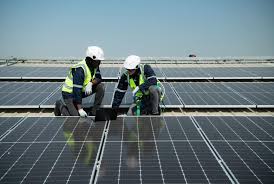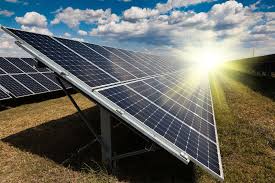Lahore, the vibrant heart of Pakistan, pulsates with energy demands that often outstrip its conventional supply. Frequent power outages, escalating electricity tariffs, and growing environmental consciousness have driven a significant surge towards a sustainable solution: solar energy. Solar installation system is no longer a niche luxury but a strategic investment for homes, businesses, and industries across the city. This 2000-word guide delves deep into the landscape of solar installation services in Lahore, empowering you to navigate the process confidently. Premium Power are the best solar installation service provider.
I. Why Lahore is Primed for Solar Power

- Abundant Sunshine: Lahore enjoys a predominantly sunny climate, averaging over 300 sunny days per year with high solar irradiance levels (typically 5.0 – 5.5 kWh/m²/day). This translates into exceptional potential for generating significant electricity from solar panels.
- High Electricity Costs: Electricity tariffs in Pakistan, especially for commercial and industrial consumers and higher domestic tiers, have risen substantially. Solar power offers a predictable, long-term cost alternative, shielding users from tariff hikes.
- Chronic Power Shortages: Load shedding (power outages) remains a persistent challenge for Lahoris. Solar systems, particularly those with battery backup (hybrid or off-grid), provide crucial energy independence and uninterrupted power supply.
- Government Incentives & Net Metering: The introduction of Net Metering Regulations by NEPRA (National Electric Power Regulatory Authority) has been a game-changer. It allows solar system owners to:
- Export excess electricity generated during the day back to the grid.
- Receive credits on their electricity bill for this exported energy.
- Draw power from the grid at night or during low production, offsetting it with credits.
- Significantly reduce payback periods (often 3-6 years for well-sized systems).
- Environmental Imperative: Reducing reliance on fossil fuels (oil, gas, coal) for power generation directly cuts carbon emissions, contributing to cleaner air and combating climate change – a growing concern in urban centers like Lahore.
- Increasing Affordability: While still a significant investment, the cost of solar panels and associated equipment has decreased globally over the past decade, making systems more accessible. Local manufacturing of some components is also emerging.
II. Understanding Solar System Types & Components

Choosing the right system is crucial. Solar installation companies in Lahore primarily offer three configurations:
- On-Grid Solar System:
- Function: Directly connected to the Lahore Electric Supply Company (LESCO) grid.
- Components: Solar Panels, On-Grid Inverter, Mounting Structure, Bi-directional Meter (provided by LESCO), Cabling, Protection Devices (MCBs, SPDs).
- Pros: Most cost-effective option (no batteries), utilizes net metering for maximum financial benefit, relatively simple solar installation.
- Cons: Does not provide power during grid outages (shuts down for safety). Reliant on the grid at night.
- Ideal For: Users primarily concerned with reducing electricity bills, who experience minimal load shedding or can tolerate outages.
- Off-Grid Solar System:
- Function: Completely independent of the LESCO grid. Requires battery storage.
- Components: Solar Panels, Off-Grid (or Hybrid capable) Inverter, Battery Bank, Charge Controller (often integrated in inverter), Mounting Structure, Cabling, Protection Devices.
- Pros: Complete energy independence, provides power 24/7 regardless of grid status. Essential for areas with unreliable or no grid access.
- Cons: Significantly higher initial cost due to batteries, batteries have a limited lifespan (typically 5-10 years) and require replacement, system sizing is critical to avoid blackouts.
- Ideal For: Remote locations, users experiencing severe and prolonged load shedding, those prioritizing absolute power backup.
- Hybrid Solar System:
- Function: Combines the best of on-grid and off-grid. Connected to the grid and incorporates battery storage.
- Components: Solar Panels, Hybrid Inverter, Battery Bank, Mounting Structure, Bi-directional Meter, Cabling, Protection Devices.
- Pros: Utilizes net metering for bill savings and provides backup power during outages. Offers maximum flexibility and energy security. Can be programmed for different operating modes (e.g., prioritize self-consumption, prioritize charging batteries).
- Cons: Higher cost than on-grid due to batteries, battery replacement cost is a future consideration.
- Ideal For: Users who want significant bill reduction and guaranteed backup power during load shedding. Becoming increasingly popular in Lahore.
Key Components Explained:
- Solar Panels (PV Modules): Convert sunlight into DC electricity. Types include:
- Monocrystalline: Highest efficiency (18-22%), best for limited space, slightly more expensive. Most common choice in Lahore.
- Polycrystalline: Slightly lower efficiency (15-17%), more affordable, good for larger roofs.
- Thin-Film: Lower efficiency, flexible, less common for rooftops.
- Inverter: The “brain” of the system. Converts DC electricity from panels into AC electricity used by appliances.
- String Inverters: Most common and cost-effective. Multiple panels connected in series (“strings”) to one inverter.
- Microinverters: One inverter per panel. Offers panel-level monitoring, better performance in shading, higher safety (low DC voltage), but more expensive.
- Hybrid Inverters: Specifically designed to integrate with battery storage and the grid.
- Mounting Structure: Securely anchors panels to the roof (typically aluminum). Design is crucial for optimal tilt, orientation (ideally true south), wind resistance, and roof integrity.
- Battery Bank (Off-Grid/Hybrid): Stores excess solar energy for use when the sun isn’t shining. Common types:
- Lead-Acid (Flooded/AGM/Gel): Traditional, lower upfront cost, but shorter lifespan, lower depth of discharge (DoD), require maintenance (flooded).
- Lithium-Ion (LiFePO4 most common): Higher upfront cost, but significantly longer lifespan (10+ years), higher DoD (80-90%), maintenance-free, lighter, more compact. Highly recommended for performance and longevity.
- Charge Controller (Off-Grid/Hybrid): Regulates voltage and current from panels to batteries, preventing overcharging. Often integrated into hybrid inverters.
- Balance of System (BoS): Cables (DC & AC), connectors (MC4), junction boxes, surge protection devices (SPDs), circuit breakers (ACDB/DCDB), monitoring systems.
III. The Solar Installation Process in Lahore: Step-by-Step

Engaging a professional solar installer by solar installation companies ensures a smooth and compliant process:
- Initial Consultation & Site Survey:
- Reputable companies offer free consultations. Discuss your energy needs, budget, backup requirements, and goals.
- A technical team visits your property (residential, commercial, industrial) to:
- Assess roof space, type, condition, orientation, and shading.
- Examine your main distribution board (MDB) and electrical setup.
- Take precise measurements.
- Discuss optimal panel placement.
- Energy Assessment & System Design:
- The installer analyzes your past 12 months of LESCO bills to determine your average monthly consumption (kWh).
- Based on consumption, site survey data, and your goals (e.g., 70% bill reduction, full backup for critical loads), they design a system:
- Calculate required system size (kWp).
- Select optimal panel type, inverter technology, and battery capacity (if needed).
- Create detailed electrical diagrams and layout plans.
- Provide a comprehensive quotation outlining equipment specifications (brands, models, warranties), system size, estimated generation, cost breakdown, projected savings, and payback period.
- Proposal Review, Financing & Agreement:
- Carefully review the proposal. Compare quotes from 3-4 reputable installers. Pay attention to equipment quality (Tier-1 panels, reputable inverters), warranties (product AND performance), workmanship warranty, and scope of services.
- Discuss financing options if needed (cash remains most common, but some installers offer installments or partner with banks/leasing companies).
- Sign a detailed contract specifying scope, timeline, payment schedule, equipment details, warranties, and responsibilities.
- Net Metering Application (For On-Grid/Hybrid):
- The installer typically handles the entire Net Metering application process with LESCO:
- Submit application form, system design, installer certification, site photos, etc.
- Pay application fees.
- Coordinate the LESCO site inspection for technical feasibility.
- Once approved, LESCO installs the bi-directional meter (replacing your old one). This step can take 4-12 weeks.
- The installer typically handles the entire Net Metering application process with LESCO:
- Solar Installation:
- Upon net metering approval (or immediately for off-grid), the installation team arrives.
- Steps include:
- Installing mounting structure securely onto the roof.
- Mounting and wiring the solar panels.
- Setting up the inverter(s) and battery bank (if applicable) in a suitable location (cool, ventilated, secure).
- Running DC cabling from panels to inverter(s) and AC cabling from inverter to distribution board.
- Installing all protection devices (SPDs, breakers) in dedicated ACDB/DCDB boxes.
- Integrating the system safely with your main electrical panel.
- Best solar installation service by Premium Power (solar installation service provider)
- Testing, Commissioning & LESCO Inspection:
- The installer rigorously tests the entire system for safety and performance: electrical checks, grounding verification, insulation resistance tests, inverter startup, and grid synchronization (if applicable).
- For net metered systems, a final LESCO inspection is conducted to approve the system for grid connection and net metering operation.
- The installer provides a comprehensive handover: system operation instructions, warranty documents, monitoring setup (if applicable), and as-built drawings.
- Monitoring & Maintenance:
- Most systems include monitoring (via inverter display, Wi-Fi/App, or online portal) to track real-time and historical energy production, consumption, and export/import.
- Professional installers offer Annual Maintenance Contracts (AMCs). Basic maintenance includes:
- Visual inspection of panels, mounts, cables.
- Panel cleaning (especially important in Lahore’s dusty/smoggy environment).
- Checking electrical connections and inverter status.
- Battery health checks (if applicable).
IV. Choosing the Right Solar Installer in Lahore: Critical Factors

The quality of your solar installation is paramount. Avoid fly-by-night operators. Consider:
- Experience & Reputation: Look for established companies (5+ years) with a proven track record. Check online reviews (Google, Facebook), ask for client references, and physically visit past installations if possible.
- Certifications & Licenses: Ensure they are certified by reputable bodies (e.g., NEPRA-approved vendors, certifications from panel/inverter manufacturers like Huawei, Fronius, Canadian Solar, etc.). Verify they have qualified electrical engineers and technicians.
- Technical Expertise: Do they offer all system types? Can they handle complex commercial/industrial projects? Do they perform detailed site surveys and energy audits?
- Equipment Quality: Do they use Tier-1 solar panels (Jinko, Longi, JA Solar, Trina, Canadian Solar), reputable inverters (Fronius, Huawei, Sungrow, Growatt, Solis), and quality batteries (BYD, Pylontech, Tesla, Dyness for Lithium; reputable brands for Lead-Acid)? Avoid obscure, uncertified brands.
- Transparency & Proposal Detail: The quote should be clear, detailed, and itemized. Avoid vague proposals. Understand the warranties offered on each component and the workmanship (typically 5-10 years).
- Net Metering Proficiency: They must have extensive experience navigating the LESCO net metering process efficiently. Ask about their average approval time.
- After-Sales Service & AMC: What is their response time for issues? Do they offer comprehensive AMCs? What do they cover? This is crucial for long-term system health.
- Financial Stability: Choose a company likely to be around to honor warranties years down the line.
V. Cost Considerations & Financing (Lahore Market – 2025 Estimates)

- Cost Factors: System size (kW), Panel Type & Efficiency, Inverter Type (String/Micro/Hybrid), Battery Type & Capacity (if any), Roof Complexity, Mounting Structure Type, Solar Installation Labor, Net Metering Fees.
- Average Cost Ranges (Installed):
- On-Grid: PKR 75 – 100 per Watt (e.g., 5kW system: ~PKR 375,000 – 500,000; 10kW: ~PKR 750,000 – 1,000,000)
- Hybrid (with Lithium Battery): Add PKR 150 – 250 per Watt for battery storage (e.g., Adding 10kWh usable storage to a 5kW system: +PKR 1,500,000 – 2,500,000).
- Off-Grid: Similar to Hybrid costs, potentially slightly higher as systems are designed solely for battery dependence.
- Financing Options:
- Cash Purchase: Most common. Offers the best ROI and fastest payback.
- Bank Loans: Some banks (e.g., HBL, Meezan Bank) offer “Green Financing” loans for solar at competitive rates. Requires down payment and collateral.
- Leasing/Rent-to-Own: Emerging options where a 3rd party finances the system, and you pay monthly installments (often including maintenance). You may own the system after the term.
- Vendor Installment Plans: Some larger installers offer their own in-house installment plans.
VI. Challenges & Considerations for Lahoris
- High Upfront Cost: Despite falling prices, the initial investment remains significant. Careful financial planning and exploring financing are key.
- Roof Suitability: Not all roofs are ideal. Factors include structural integrity, age, shading (trees, neighboring buildings), orientation, and available space. Ground-mounted systems are an alternative if space allows.
- Dust & Pollution: Lahore’s air pollution and dust significantly reduce panel efficiency. Regular cleaning (monthly/bi-monthly) is essential to maintain optimal output. Consider tilt angles that facilitate self-cleaning during rain.
- Net Metering Processing Delays: While improved, navigating LESCO’s net metering approval can still be slow and bureaucratic. Choose an installer experienced in expediting this.
- Quality & Standards: The rapid market growth has attracted unqualified installers using substandard equipment. Diligent vendor selection is critical.
- Battery Costs & Lifespan: While lithium prices are falling, batteries remain expensive and have a finite lifespan, adding to the long-term cost of hybrid/off-grid systems.
- Regulatory Uncertainty: While net metering is established, staying informed about potential future policy changes is prudent.
VII. The Future of Solar in Lahore
The trajectory is overwhelmingly positive:
- Continued Growth: Adoption rates across residential, commercial (shopping malls, offices, hospitals), and industrial sectors will keep rising.
- Falling Costs: Further reductions in panel, battery, and inverter costs will improve accessibility.
- Battery Technology Advancements: Longer lifespan, higher density, and lower costs for lithium batteries will make hybrid systems more attractive.
- Smart Grid Integration: Future systems will integrate more intelligently with the grid, offering demand response capabilities.
- Increased Localization: Growth in local assembly/manufacturing of panels, inverters, and batteries could reduce import dependence and costs.
- Focus on Efficiency: Higher-efficiency panels and smarter inverters will maximize generation from limited roof spaces.
VIII. Conclusion
Investing in a solar installation service in Lahore is a powerful decision with compelling benefits: substantial long-term savings on electricity bills, reliable backup power during outages, increased property value, energy independence, and a tangible contribution to a cleaner environment. While the initial investment requires careful consideration, the combination of Lahore’s abundant sunshine, favorable net metering policies, and decreasing technology costs makes the financial case stronger than ever.
Success hinges on meticulous planning, thorough research, and most importantly, partnering with a reputable, experienced, and certified solar installation company. By understanding your energy needs, the different system types, the solar installation process, and the critical factors in choosing an installer, you can confidently harness the power of the sun and illuminate a brighter, more sustainable, and cost-effective future for your home or business in Lahore. The sun is shining on the City of Gardens – it’s time to capture its power. Contact us for solar installation service. Premium Power provides the best solar installation service all over Pakistan.





